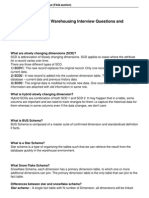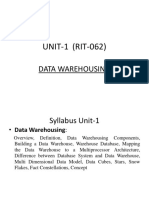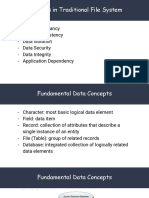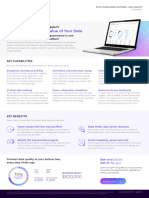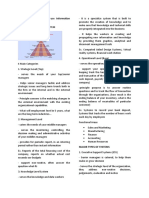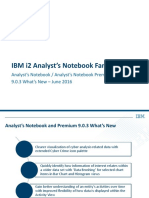0% found this document useful (0 votes)
91 views5 pagesDatabase System and Data Warehouse
Database systems are used for operational processes like storing and querying transactional data, while data warehouses are used for analysis and reporting of historical data from multiple sources. Key differences include: Database systems support current operational data access and updates, while data warehouses integrate and analyze historical data from multiple systems updated on scheduled processes. Databases are application oriented while data warehouses are subject oriented. Data is stored in relational tables in databases and multidimensional models like star schemas in data warehouses.
Uploaded by
Manoj ManuCopyright
© © All Rights Reserved
We take content rights seriously. If you suspect this is your content, claim it here.
Available Formats
Download as DOCX, PDF, TXT or read online on Scribd
0% found this document useful (0 votes)
91 views5 pagesDatabase System and Data Warehouse
Database systems are used for operational processes like storing and querying transactional data, while data warehouses are used for analysis and reporting of historical data from multiple sources. Key differences include: Database systems support current operational data access and updates, while data warehouses integrate and analyze historical data from multiple systems updated on scheduled processes. Databases are application oriented while data warehouses are subject oriented. Data is stored in relational tables in databases and multidimensional models like star schemas in data warehouses.
Uploaded by
Manoj ManuCopyright
© © All Rights Reserved
We take content rights seriously. If you suspect this is your content, claim it here.
Available Formats
Download as DOCX, PDF, TXT or read online on Scribd
/ 5

































